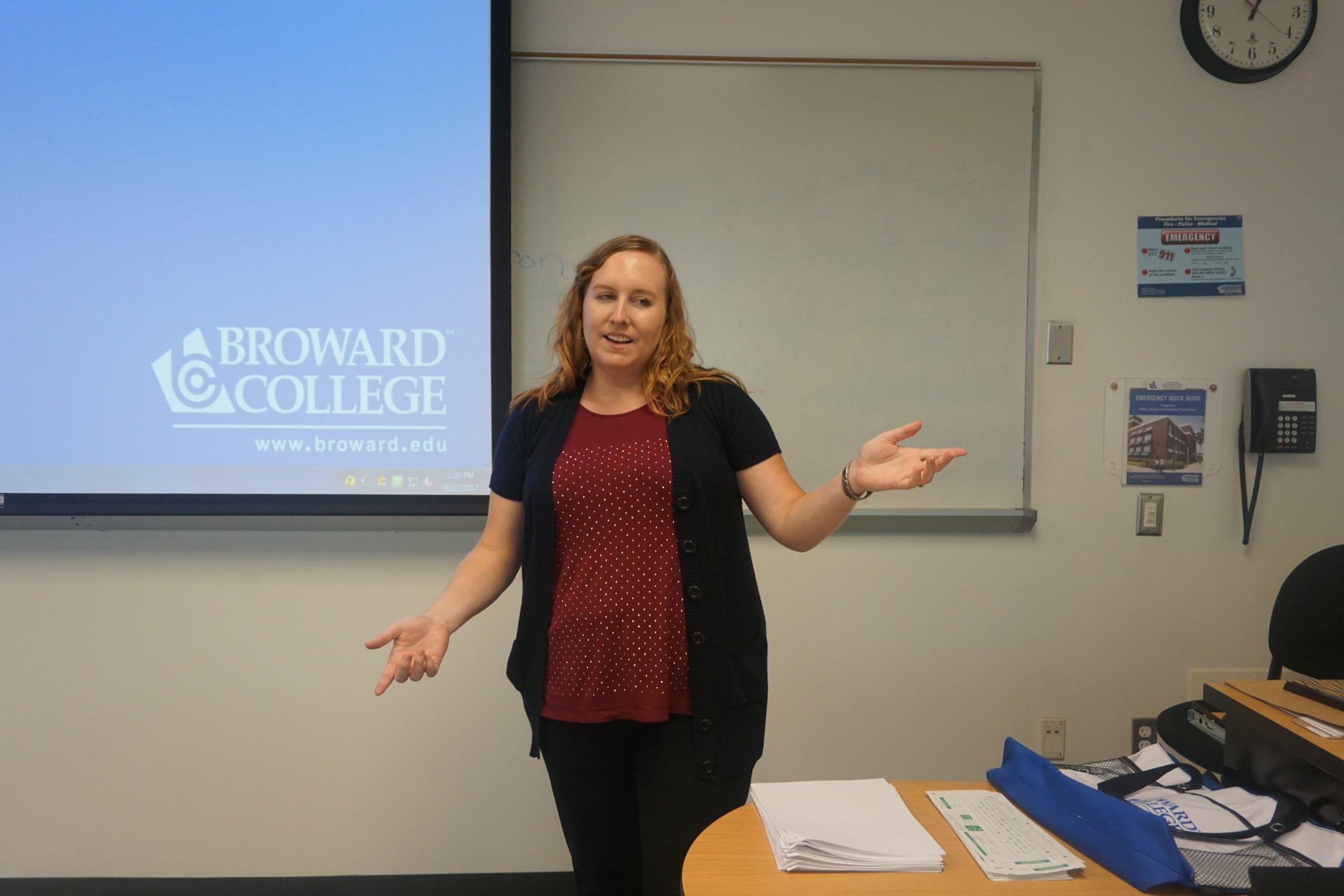Manicia Reneus
North Campus Bureau Chief
From collecting rocks to now teaching students about them, a passionate professor, Dr. Tawny Tibbits wants students to know that geology can have an impact in their lives.
“I always grew up with it,” said Tibbits.
As a child, Tibbits would go with her father and sister to rock quarries that they had in Southern Iowa. A quarry is a place where rocks, stones or gravel has been dug up from the ground.
“We had huge rock collections growing up all the time,” said Tibbits.
Tibbits gained her passion of rocks in her childhood and pursued that desire throughout college. Today, Tibbits has a Ph.D. in Geoarchaeology from the University of Iowa.
“Teaching is my passion for sure, it’s number one for me,” said Tibbits.
During Tibbits’ Ph.D. work, she was a teacher assistant. She taught labs each semester. Some of the labs that Tibbits taught were Earth Science, Environmental Science and Geology. There were about 20 students who attended Tibbits small groups. She showed students how to identify different rocks. Additionally, students learned that rocks can reveal what occurred many years ago and play a role in today’s landscapes.
Outside of teaching in the classroom, Tibbits got the opportunity to travel to Belize to do research for a thesis paper. The outreach program allowed Tibbits to teach people from the community about the geology in their area. Once again, Tibbits and rocks could not be separated. In Belize, she worked in the anthropology department working with rocks.
“I like the interaction between people and the earth,” said Tibbits.
According to Tibbits, where people put themselves in civilization is a direct correlation of geology. All the big civilization in the past have occurred in places that have water and fertilize soil. Easy transport such as rivers and lakes are other ways to determine where human progression occurred or still take place today. In a Southern Belize site near a Mayan Village, Tibbits taught the people that the ancient Mayans lived in a certain area based on geology and the resources they had around them.
Furthermore, Tibbits’ time in Belize was an exchangeable experience. The people of Belize taught Tibbits about plants and animals. For instance, there was a plant that could be eaten with spices. In another plant, the vine had water that could be used to drink. The thicker the vine the more water the plant can hold. Also, the Belizeans use copal, which is a red seed that can be utilized as an incense. All in all, Tibbits enjoyed learning from the people of Belize.
“The most common thing I get is ‘I hate science’,” said Tibbits.
Tibbits want students to get a little more appreciative and have a better understanding of the world around them. One of the things students can take away from geology is the understanding of why hurricanes happens.
Besides hurricanes, saltwater encroachment is very common in South Florida. This occurs when saltwater enters freshwater, which can contaminate drinking water. People can see if their homes are safe from water encroachment by knowing where their water tables are located around their homes. When individuals understand where their water tables are located on the grounds, they can avoid putting water tables in areas that will cause their water to be contaminated.
“I can’t wait to get more involved and start working in things like the science club,” said Tibbits.
Tibbits is a new professor at BC from Iowa and is excited to contribute great things to the Seahawk community. She looks forward to potentially starting an outreach program for students and going on field trips to look at shoreline erosions. Now that Tibbits is a new Floridian, she will be taking her time discovering the geology of South Florida.
